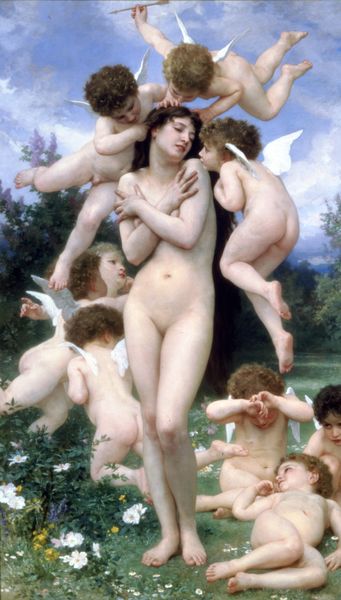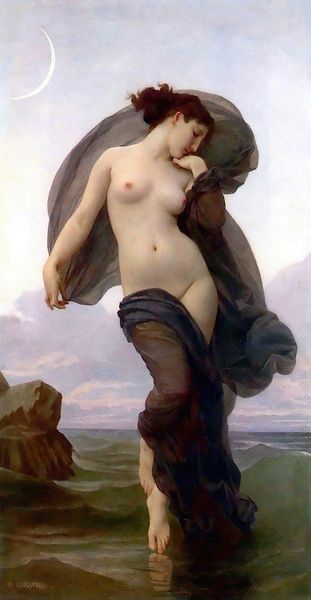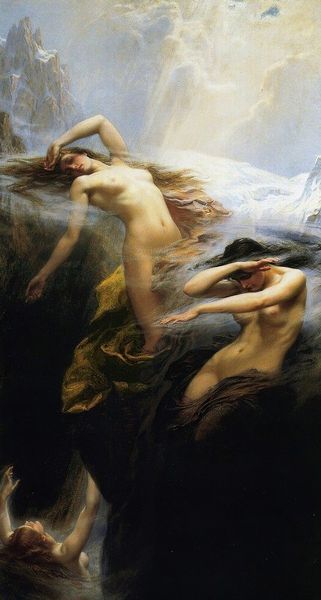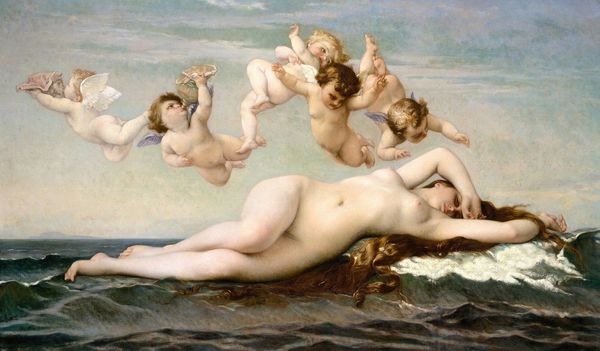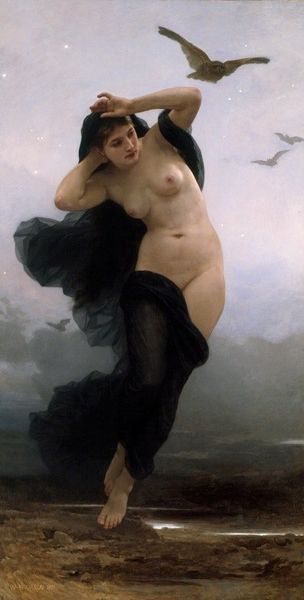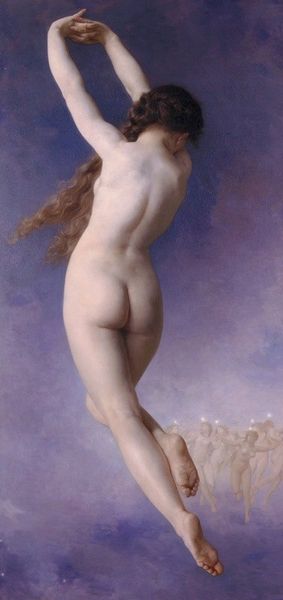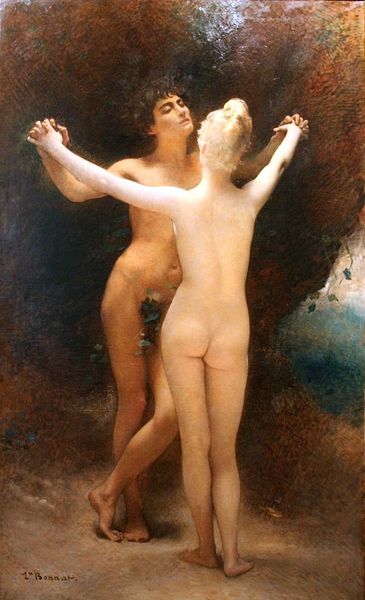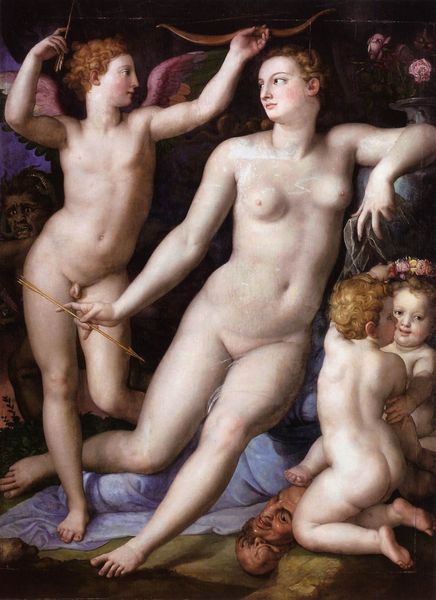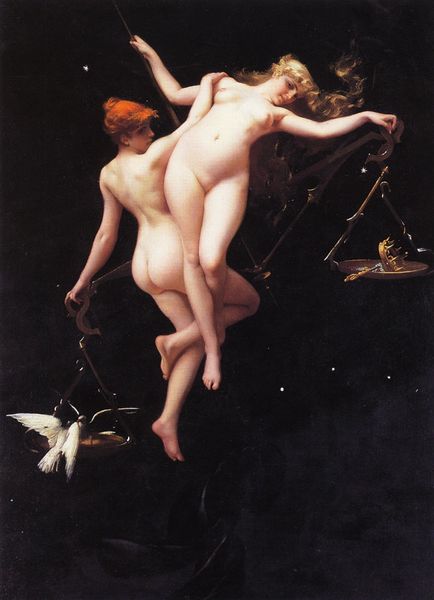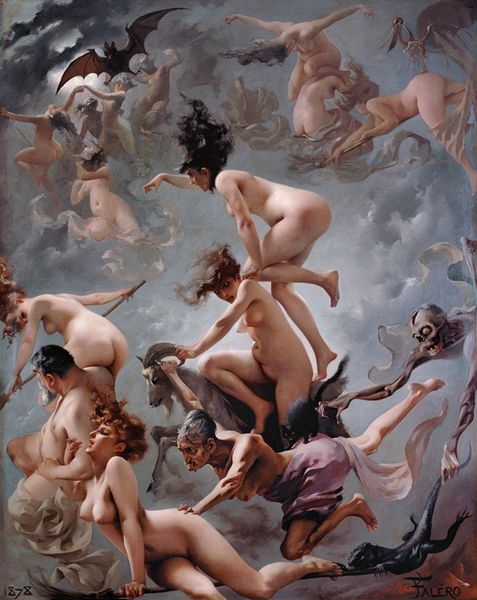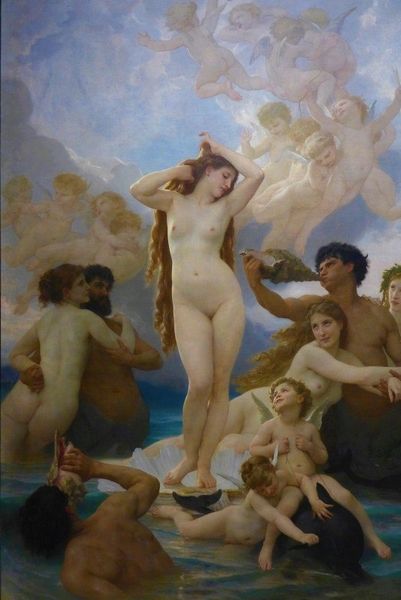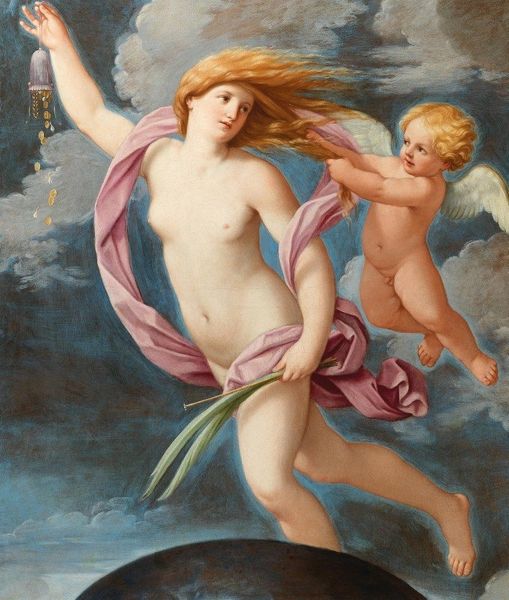
Copyright: Public Domain: Artvee
Curator: Bouguereau's 1899 canvas, entitled "Love and Psyché", presents an iconic mythological scene. What are your first impressions? Editor: There’s a certain idealized sweetness here; the composition is soft, almost yielding, with a light palette creating a very dreamy, almost sentimental affect. Curator: Indeed, it is sentimental, in its Victorian interpretation of Romanticism, we see clear influences of Academic art and the rise of bourgeois patronage dictating more palatable depictions of myth. Bouguereau certainly knew his audience. Editor: Absolutely. Notice the meticulous rendering of the figures, the flawless skin tones, the incredibly precise detail in the rendering of the wings, both angel and fairy; there’s a technical mastery that speaks to Bouguereau's training, particularly through drawing as an essential stage. It invites close viewing. Curator: This technical skill also reinforces an aesthetic which catered to conservative tastes within the Parisian Salons. This approach allowed Bouguereau to avoid some of the harsh criticism directed at avant-garde movements gaining traction at the time, positioning him favorably with institutions and buyers alike. Editor: Certainly, but look beyond that to how he's used implied lines. The gentle slope of Psyché’s body mirrors Cupid’s arm. It creates a visual harmony. And what about the colour—the juxtaposition of the pure white wings with the shadowed tone of Psyché’s azure pair creates such visual depth against the atmospheric quality of the sky. It has to be seen in person. Curator: Considering the art market then gives this piece renewed meaning. It stood as an emblem of traditional values in the face of significant artistic, political, and social change. Its enduring appeal illustrates art's intricate relationship with societal values, both embraced and rejected. Editor: So much to unpack within the aesthetic choices of Bouguereau, far from superficial sentimentality. Curator: I think understanding that the piece tells more about the politics of beauty than the beauty of art, perhaps?
Comments
No comments
Be the first to comment and join the conversation on the ultimate creative platform.

